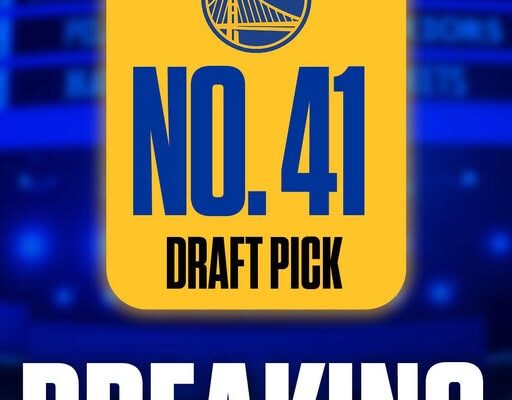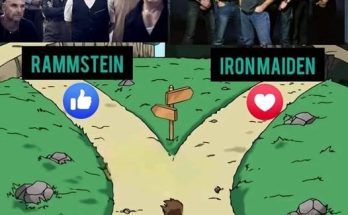Brooklyn, NY – The 2025 NBA Draft was a flurry of activity for the Golden State Warriors, as they demonstrated a clear strategic approach to maximizing their draft capital. In a pivotal move that set the tone for their second-round selections, the Warriors, after initially picking Koby Brea with the 41st overall choice, immediately traded his draft rights to the Phoenix Suns in exchange for the Suns’ 52nd and 59th overall picks.
This trade, widely reported and effectively executed on draft night, allowed the Warriors to convert a single, higher second-round pick into two later second-round selections. This strategy is not new for Golden State; it reflects a front office philosophy that values multiple opportunities to unearth talent in the later stages of the draft, especially when operating under significant salary cap constraints. By acquiring more picks, the Warriors increase their chances of finding cost-controlled players who can potentially contribute to their roster or develop into future assets, either for the main roster or their G-League affiliate, the Santa Cruz Warriors.
General Manager Mike Dunleavy Jr. and the Warriors’ brass have shown a consistent willingness to trade down and accumulate more draft capital in recent drafts. This approach is particularly sensible for a team with an aging, high-salaried core. While a single higher second-round pick might offer a slightly better chance at landing an immediate contributor, the difference in talent between the early and late second round can often be negligible. By acquiring two picks instead of one, the Warriors double their chances of hitting on a player who fits their system, possesses specific skills they covet, or has untapped potential.
In this instance, by trading the 41st pick to Phoenix, the Warriors effectively gained the opportunity to draft two players they identified as fits later in the round:
- Alex Toohey (52nd overall pick): A 6-foot-8 Australian forward from the Sydney Kings (NBL), Toohey is known for his high basketball IQ, defensive versatility, and developing offensive game.1 He fits the Warriors’ mold of a smart, versatile wing who can play within a team concept.
- Will Richard (56th overall pick): A 6-foot-4 guard from the University of Florida, Richard is a “3-and-D” specialist who was a key contributor to Florida’s 2025 National Championship team.2 His shooting ability and defensive tenacity make him a strong fit for the Warriors’ perimeter-oriented style. (Note: The Warriors acquired this 56th pick in a separate trade with the Memphis Grizzlies, giving up the 59th pick and some future assets. This shows their active maneuvering to target specific players.)
This trade sequence demonstrates the Warriors’ confidence in their scouting department’s ability to identify talent in the later second round. It also provides them with more players to evaluate in Summer League and training camp, creating a competitive environment and allowing them to see which prospects might be ready to contribute or require further development in Santa Cruz.
On the other side of the trade, the Phoenix Suns made a very targeted acquisition. By moving up from picks 52 and 59 to acquire the 41st overall selection, the Suns were able to land Koby Brea, a player widely regarded as one of the best pure shooters in the 2025 draft class.
Brea, a 6-foot-6 guard from Kentucky (after transferring from Dayton), finished his collegiate career with a remarkable 43.5% shooting accuracy from three-point range in his final season with the Wildcats.3 This followed a season at Dayton where he led the nation by shooting 49.8% from deep. His size for a guard and his elite catch-and-shoot ability make him an immediate fit for the Suns’ offensive scheme.
Phoenix’s roster is built around a “Big Three” of superstar scorers who command significant defensive attention. To maximize their offensive efficiency, the Suns need reliable floor-spacers who can punish defenses for collapsing on their stars. Brea fits this role perfectly. He can stretch the floor, hit open shots created by the Suns’ primary ball-handlers, and provide a threat off the ball. His presence will help ensure that their offensive ecosystem functions smoothly, preventing defenses from clogging the paint.
Suns General Manager Brian Gregory’s familiarity with Brea from his time coaching at Dayton likely played a role in Phoenix’s strong interest. This personal connection, combined with Brea’s proven skill set, made him a priority target for the Suns. The move underscores Phoenix’s “win-now” mentality, as they are looking for immediate contributors who can complement their veteran core and help them contend for a championship.
For both teams, these second-round picks come with financial flexibility. Unlike first-round picks, second-rounders are not subject to a rookie scale. This allows teams to sign them to more team-friendly contracts, often minimum salary deals or two-way contracts. For the Warriors, deeply entrenched in the luxury tax, acquiring two cost-controlled assets instead of one is a significant financial benefit. For the Suns, adding a valuable shooter like Brea on a non-guaranteed or minimum deal is an efficient way to improve their roster depth without further exacerbating their own cap situation.
The trade of the 41st pick, Koby Brea, from the Golden State Warriors to the Phoenix Suns in exchange for the 52nd and 59th picks was a shrewd move by both franchises, albeit for different strategic reasons.
The Golden State Warriors prioritized accumulating more lottery tickets in the second round, leveraging their proven ability to develop players from later picks. This multi-pick approach allowed them to select two prospects, Alex Toohey and Will Richard, who align with their system and address specific positional needs while maintaining financial flexibility.4
The Phoenix Suns made a direct, targeted move to acquire an elite skill set. By moving up to select Koby Brea, they added one of the draft’s premier sharpshooters, a player who perfectly complements their star-studded roster and helps address their need for perimeter spacing.
This trade exemplifies the dynamic nature of the NBA Draft, where teams constantly evaluate talent, assess needs, and make calculated decisions to build their ideal rosters. Both the Warriors and the Suns believe they emerged from this exchange in a stronger position to achieve their respective goals in the upcoming seasons.



